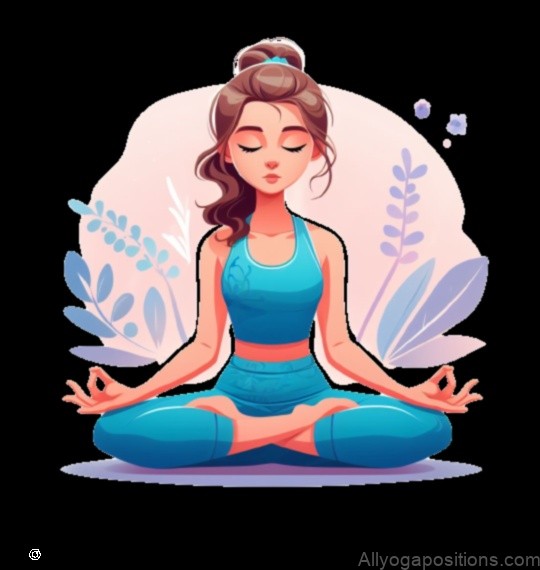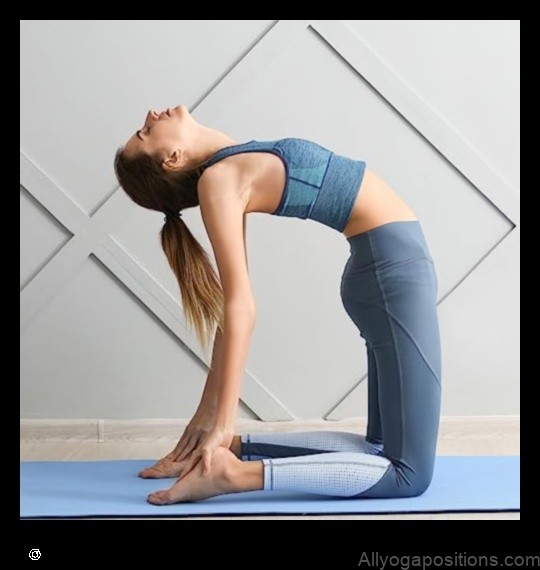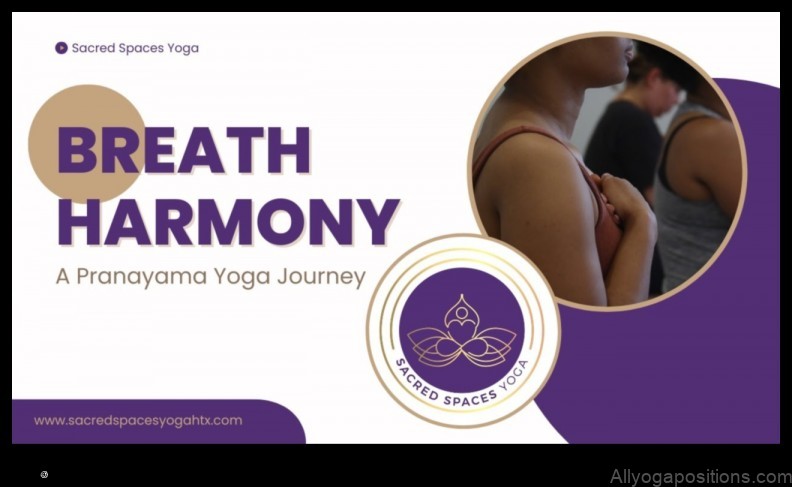
Breath of Bliss: Yoga for Pranayama Harmony
Pranayama is a type of yoga that focuses on breathing exercises. It is said to have a number of benefits, including reducing stress, improving sleep, and boosting energy levels.
This article will provide you with an introduction to pranayama yoga, including its history, benefits, and different types of pranayama exercises. We will also provide you with tips on how to get started with pranayama yoga and where you can find classes or workshops.

History of Pranayama Yoga
Pranayama is a ancient practice that has been around for thousands of years. It is believed to have originated in India, where it is still practiced today.
The word “pranayama” is derived from two Sanskrit words: “prana,” which means “life force,” and “ayama,” which means “expansion.” Pranayama is therefore the practice of expanding the life force through breathing exercises.
Pranayama is often practiced as part of a yoga practice, but it can also be practiced on its own. It is a safe and effective way to improve your health and well-being.
Benefits of Pranayama Yoga
Pranayama yoga has been shown to have a number of benefits, including:
- Reduced stress
- Improved sleep
- Boosted energy levels
- Improved focus and concentration
- Reduced pain
- Improved digestion
- Enhanced immunity
Pranayama yoga can also help to improve your overall sense of well-being and happiness.

Different Types of Pranayama Exercises
There are many different types of pranayama exercises. Some of the most common include:
- Breathing in and out slowly and deeply
- Holding your breath for a period of time
- Breathing in through one nostril and out through the other
- Breathing in and out through your mouth
You can find many different pranayama exercises online or in books. It is important to start slowly and gradually increase the difficulty of the exercises as you become more comfortable with them.
How to Get Started with Pranayama Yoga
If you are new to pranayama yoga, it is important to start slowly and gradually increase the difficulty of the exercises as you become more comfortable with them.
Here are a few tips for getting started with pranayama yoga:
- Find a quiet place where you can practice without distractions.
- Wear comfortable clothing that you can move around in easily.
- Start by practicing for a few minutes each day and gradually increase the amount of time you practice as you become more comfortable.
- Listen to your body and stop if you feel any discomfort.
If you have any health conditions, it is important to talk to your doctor before starting a pranayama yoga practice.
Where to Find Pranayama Yoga Classes or Workshops
You can find pranayama yoga classes or workshops at many yoga studios, gyms, and community centers. You can also find online classes and workshops.
When choosing a class or workshop, it is important to find one that is suited to your experience level and interests.
Here are a few resources for finding pranayama yoga classes or workshops:
- Yoga Alliance: https://www.yogaalliance.org/” rel=”nofollow”
- Yoga Journal: https://www.yogajournal.com/” rel=”nofollow”
- MindBody: https://www.mindbodyonline.com/” rel=”nofollow”
Topic Answer Introduction Breath of Bliss is a type of yoga that focuses on breathing exercises. It is said to have a number of benefits, including reducing stress, improving sleep, and boosting energy levels. History of Yoga Yoga is a ancient practice that originated in India. It is believed to have been practiced for thousands of years. Benefits of Yoga Yoga has been shown to have a number of benefits, including reducing stress, improving sleep, boosting energy levels, and improving flexibility. Different types of Yoga There are many different types of yoga, each with its own focus and benefits. Some of the most popular types of yoga include Hatha yoga, Vinyasa yoga, and Bikram yoga. How to get started with Yoga If you are new to yoga, it is a good idea to start with a beginner class. This will help you learn the basics of yoga and how to do the poses safely. II. History of Yoga
Yoga is an ancient Indian practice that has been around for thousands of years. It is believed to have originated in the Indus Valley Civilization, which flourished in the northwestern part of India from around 2500 to 1900 BCE. The earliest written records of yoga date back to the 2nd century BCE, when it was mentioned in the Hindu texts the Rigveda and the Upanishads.
Yoga was traditionally practiced by Hindu yogis as a way to achieve spiritual enlightenment. However, in the 20th century, it began to be adopted by people from all over the world as a way to improve their physical and mental health.
Today, there are many different styles of yoga, each with its own unique set of poses and practices. Some of the most popular styles include hatha yoga, vinyasa yoga, and ashtanga yoga.
Yoga is a safe and effective way to improve your overall health and well-being. It can help you to reduce stress, improve your flexibility, and increase your strength and balance. It can also help you to improve your mood and sleep quality.
If you are interested in trying yoga, there are many different ways to get started. You can find classes at your local gym or yoga studio, or you can learn yoga from a book or online video.
Yoga is a lifelong practice that can help you to stay healthy and happy. It is a great way to connect with your body and mind, and to find inner peace.
Benefits of Yoga
Yoga has been shown to have a number of benefits for both physical and mental health. Some of the benefits of yoga include:
- Improved flexibility
- Increased strength
- Better balance
- Reduced stress
- Improved sleep
- Reduced pain
- Improved mood
- Increased energy levels
- Enhanced self-awareness
Yoga is also a great way to reduce stress and anxiety. When you practice yoga, you focus on your breath and your body movements. This can help to quiet your mind and bring you into a state of relaxation. Yoga can also help to improve your mood and increase your energy levels.
IV. Different types of Yoga
There are many different types of yoga, each with its own unique benefits. Some of the most popular types of yoga include:
* Hatha yoga: This is a general type of yoga that focuses on basic poses and breathing exercises. It is a good option for beginners.
* Ashtanga yoga: This is a more challenging type of yoga that involves a series of flowing poses. It is said to be good for improving strength and flexibility.
* Bikram yoga: This is a type of hot yoga that is practiced in a heated room. It is said to be good for detoxification and weight loss.
* Yin yoga: This is a slow and gentle type of yoga that focuses on deep stretching. It is said to be good for relieving stress and improving sleep.
* Restorative yoga: This is a type of yoga that focuses on relaxation and healing. It is a good option for people who are recovering from an injury or illness.The best type of yoga for you will depend on your individual needs and preferences. If you are new to yoga, it is a good idea to start with a beginner class. You can then gradually progress to more challenging types of yoga as your fitness level improves.
V. How to get started with Yoga
Yoga is a mind and body practice with a 5,000-year history in ancient Indian philosophy.
There are many different styles of yoga, but all share a common goal of improving physical and mental health.
Yoga can help to reduce stress, improve flexibility, strength, and balance, and promote relaxation.
It can also help to improve sleep, reduce pain, and boost energy levels.
If you’re new to yoga, it’s a good idea to start with a beginner class. This will help you to learn the basics of yoga and how to do the poses safely.
You can find beginner yoga classes at most gyms, yoga studios, and community centers.
Once you’ve learned the basics, you can start practicing yoga at home. There are many resources available to help you get started, including books, DVDs, and online classes.
Here are some tips for getting started with yoga:
* Start slowly and gradually increase the amount of time you practice.
* Listen to your body and don’t push yourself too hard.
* Find a yoga style that you enjoy and that fits your fitness level.
* Make yoga a part of your regular routine and practice it regularly.Yoga is a great way to improve your physical and mental health. It’s a safe and effective way to reduce stress, improve flexibility, strength, and balance, and promote relaxation.
If you’re new to yoga, it’s a good idea to start with a beginner class. This will help you to learn the basics of yoga and how to do the poses safely.
Once you’ve learned the basics, you can start practicing yoga at home. There are many resources available to help you get started, including books, DVDs, and online classes.
VI. Yoga poses for beginners
Yoga poses for beginners are designed to help you get started with yoga and build a strong foundation of basic poses. These poses are typically gentle and easy to follow, and they can help you improve your flexibility, strength, and balance.
Here are some of the most common yoga poses for beginners:
- Standing forward bend
- Warrior pose I
- Triangle pose
- Downward-facing dog
- Child’s pose
For more information on yoga poses for beginners, please see our yoga poses for beginners page.
VII. Yoga poses for intermediate practitioners
Yoga poses for intermediate practitioners are designed to challenge your body and mind while also providing a deep sense of relaxation. These poses are typically more difficult than beginner poses, but they are still accessible to those who have been practicing yoga for a few months.
Some of the benefits of practicing yoga poses for intermediate practitioners include:
- Increased flexibility
- Strengthened muscles
- Improved balance
- Reduced stress
- Improved sleep
If you are new to yoga, it is important to start with beginner poses and gradually work your way up to more challenging poses. This will help you avoid injury and ensure that you get the most out of your practice.
Here are some examples of yoga poses for intermediate practitioners:
- Warrior II pose
- Extended Side Angle pose
- Downward-Facing Dog pose
- Plank pose
- Bridge pose
For more information on yoga poses for intermediate practitioners, please consult a qualified yoga instructor.
Yoga poses for advanced practitioners
Yoga poses for advanced practitioners are designed to challenge your body and mind. They require a high level of flexibility, strength, and balance. If you are new to yoga, it is important to start with beginner poses and gradually work your way up to more advanced poses.
Here are some examples of yoga poses for advanced practitioners:
- Purna Uttanasana (Standing Forward Fold)
- Trikonasana (Triangle Pose)
- Virasana (Hero Pose)
- Utthita Hasta Padangusthasana (Extended Hand to Big Toe Pose)
- Sirsasana (Headstand)
When practicing these poses, it is important to listen to your body and avoid any pain. If you feel any discomfort, stop the pose and come out of it slowly.
Yoga is a journey, and it takes time to progress to more advanced poses. Be patient with yourself and enjoy the process.
IX. Yoga for specific health conditions
Yoga can be beneficial for a variety of health conditions, including:
- Stress
- Anxiety
- Depression
- Insomnia
- Back pain
- Headaches
- Migraines
- High blood pressure
- Heart disease
Yoga can help to improve these conditions by reducing stress, improving sleep, and increasing flexibility and strength. It can also help to improve mood and reduce pain.
If you are considering using yoga to help manage a health condition, it is important to talk to your doctor first. They can help you determine if yoga is right for you and recommend a specific type of yoga that may be most beneficial.
X. FAQ
Q: What is pranayama yoga?
A: Pranayama yoga is a type of yoga that focuses on breathing exercises. It is said to have a number of benefits, including reducing stress, improving sleep, and boosting energy levels.
Q: How do I do pranayama yoga?
A: There are many different ways to do pranayama yoga. Some common exercises include:
- Breathing in for a count of four, holding your breath for a count of four, and then exhaling for a count of four.
- Breathing in through your nose and out through your mouth.
- Breathing in through your right nostril and out through your left nostril.
Q: What are the benefits of pranayama yoga?
Pranayama yoga has been shown to have a number of benefits, including:
- Reduced stress
- Improved sleep
- Boosted energy levels
- Improved focus and concentration
- Reduced anxiety
- Improved mood
Table of Contents
Maybe You Like Them Too
- Yoga for Emotional Healing Body-Mind Centering
- Fire Log Pose A Restorative Yoga Pose for Deep Relaxation
- Yoga for Emotional Healing Open Your Heart and Mind to Self-Discovery
- Empowerment Essence Yoga for Core StrengthStrengthen your core and your mind with this powerful yoga practice.
- Yoga for Singers A Guide to Enhancing Vocal Performance
